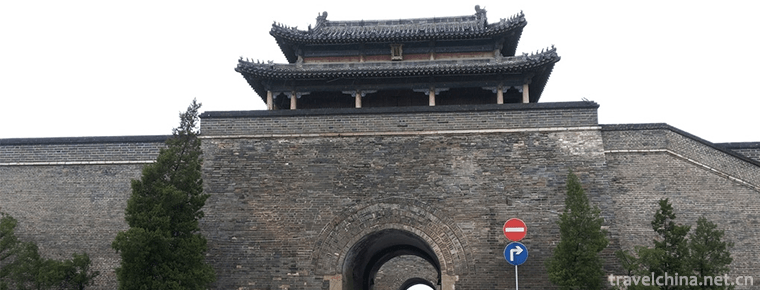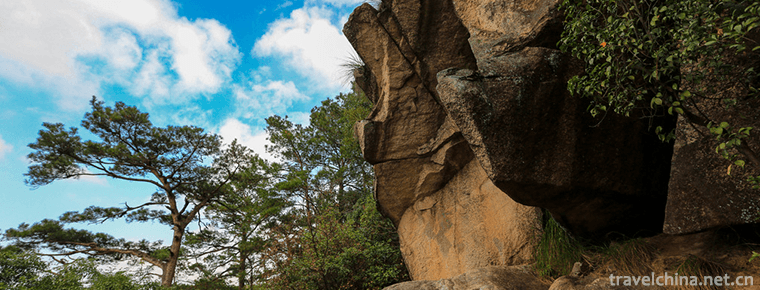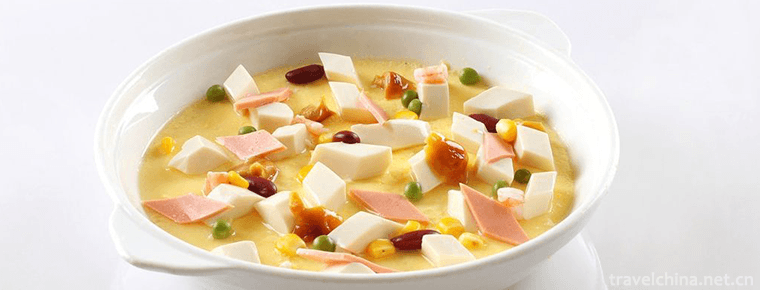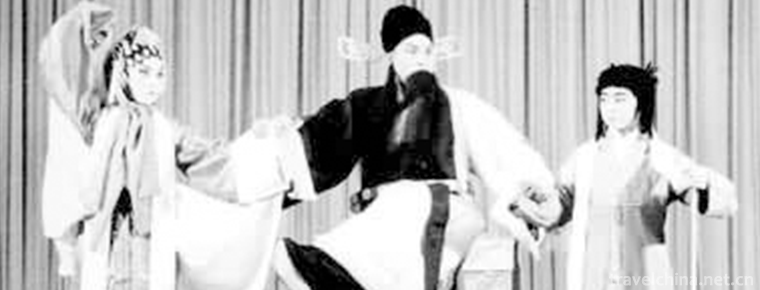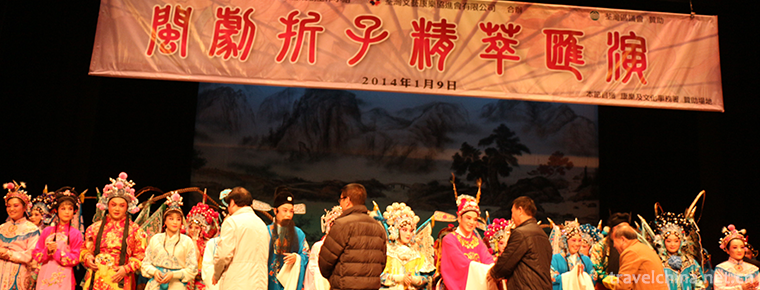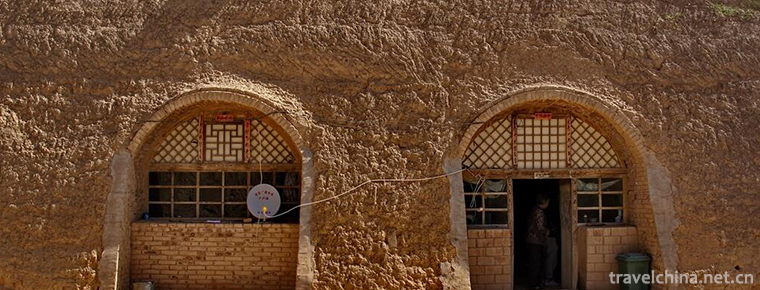Huizhou folk songs
Huizhou folk songs
Huizhou folk song is an ancient traditional folk art in Huizhou area. It is rich in content and diverse in genres, including chants, folk songs, minors, Buddhist and Taoist songs, etc. There are similarities between Huizhou folk songs and Huizhou folk songs. They are not only widely sung, but also very catchy. In ancient times, there were countless folk songs in Huizhou, but unfortunately now they are facing the dilemma of endangerment. Following is the collection of folk song manuscripts, some of which are relatively primitive, retaining the character and rhyme characteristics of ancient Chinese dialects; some of which are expressed in vernacular way because local dialects can not find the corresponding Chinese characters.
In June 2008, the Huizhou Folk Songs declared by Huangshan City of Anhui Province were listed in the second batch of national intangible cultural heritage lists with the approval of the State Council. Heritage serial number 577 II-78.
historical origin
The "rolling voice - Haha tune" in Huizhou folk songs was prevalent in the Yuan and Ming Dynasties. However, the Ming Dynasty opera rose everywhere. In the middle of Ming Dynasty, Haha tune of Huizhou folk songs was absorbed into local operas such as Huizhou opera and Qingyang tune. Huizhou merchants prevailed throughout the country in the Ming Dynasty. Haha Opera followed the footsteps of Huizhou merchants throughout the country. Huizhou merchants'fans and opera fans sang Huizhou's folk songs and Huizhou Opera in all directions. They were integrated into the singing tunes of other dramas and became the characteristic tricks of singing and performing various operas in the South and north. The "rolling sound - haha tune" (flowery tune, laughing and laughing tune) of Hui tune has a significant and far-reaching influence.
The origin and background of Huizhou opera are very complex. With commerce as a link, Huizhou in the Ming Dynasty was linked to Zhejiang in the east, Jiangxi in the west, Beijing in the north and Fujian and Guangdong in the south. Its economic status was very important. In this commercial transportation line, Huizhou is linked with Yuyao, Haiyan, Yiyang, Suzhou and other famous opera origins. Yiyang tune, which was produced during the reign of Zhengde in Ming Dynasty, was absorbed by Huizhou artists and developed into a famous Huichi elegant tune in Jiajing. In the mid-Wanli period, the Kunqu Opera performed by Huizhou Ban in Wuzhong surpassed the authentic Kunqu Opera Band for a while. Huizhou in Ming Dynasty was not only the successor of the new opera, but also the enthusiastic supporter and disseminator of the new opera art. Wang Daokun's Tai Han Ji contains: At that time, in Liuyi, Huizhou, and its neighboring counties, it became a custom to gather people to perform at the occasion of wedding and funeral celebrations with sacrificial rites. Among them, Mulian Opera, Nuo Opera, Puppet Opera, Zhongkui Dance and so on are often performed.
artistic characteristics
Huizhou folk song "Rolling Sound - Haha Tune" in ancient Huizhou dialect is called "Huahua Tune", also known as "Laughter and Laughter Tune", and it is called "Haha Tune" in ancient mandarin. As the name implies, at that time, the Mandarin was spread as "rolling sound - Haha tune". This kind of singing tone, in the folk songs with lining words in Huizhou folk songs, requires the singer to have a high voice, bright, sweet, pure, smooth breath, enthusiastic and unrestrained. Especially at the end of the song, the Haha tone doubles and prolongs, which makes the song more beautiful and beautiful. It is the oldest Huiyun characteristic voice in Huizhou folk song singing. It has a unique style, a long history and is interesting.
Representative works
Huizhou folk songs are rich in content and diverse in genres, such as chants, folk songs, minors and Buddhist and Taoist songs. There are many folk customs, songs and dances in the minor. As early as the early 1980s, Tunxi folk song Xiaoshiqiao, Shexian folk song "Cattle Flower Drum", "Riddle-guessing Song" and "December Flower" were recorded by China Record Society and distributed to domestic and foreign audiences. Anhui People's Broadcasting Station broadcast Tunxi folk song "Xiaoshiqiao" as an audience appreciation program. In 1994, China Radio International broadcasted Tunxi Folk Song Xiaoshiqiao and Shexian Folk Song December Flower to foreign countries. In 2005, Tunxi Folk Song Xiaoshiqiao was included in the music textbooks of middle school students. There are similarities between Huizhou folk songs and Huizhou folk songs. They are not only widely sung, but also very catchy. In ancient times, there were countless folk songs in Huizhou, but unfortunately now they are facing the dilemma of endangerment. Following is the collection of folk song manuscripts, some of which are relatively primitive, retaining the character and rhyme characteristics of ancient Chinese dialects; some of which are expressed in vernacular way because local dialects can not find the corresponding Chinese characters.
Inheritance value
Huizhou has not only beautiful and magical Huangshan, but also many Huizhou folk songs. It combines Hui merchants, Hui scholarship, Hui paintings and Hui doctors to form a shining constellation, shining with the magnificent beauty of Huangshan mountains and rivers to the world, and pouring out the rich inner feelings of Huangshan people to the world.
Ancient Huizhou people, after hard work, decorated their lives with their folk songs, promoted the spirit of "Huizhou Camel" with their folk songs, and recorded the most essential and colorless page of Huizhou culture with their folk songs.
Musicians in Huizhou have made a thorough and thorough excavation in all districts and counties and sorted out Huizhou folk songs. After more than 20 years, Huizhou folk songs have been presented to people in batches. They are like simple and unadorned mountain flowers. They are like bright and shining springs. People are surprised and sigh at them.
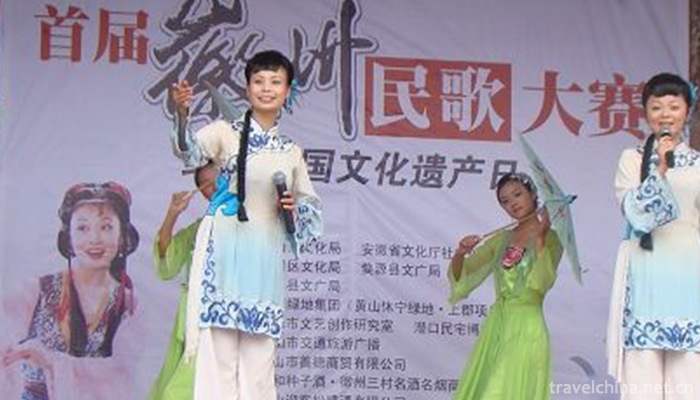
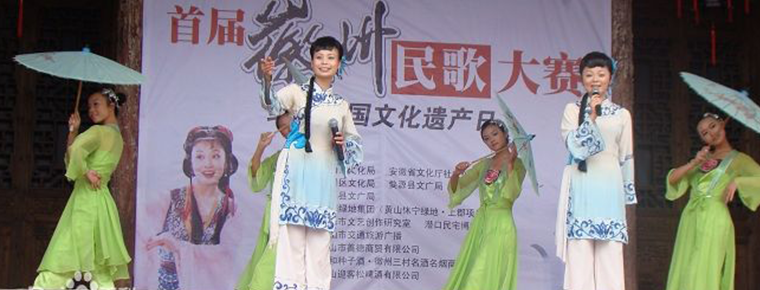
Huizhou folk songs
-
Qu Fuming Gucheng
Qufuming Old Town: World Cultural Heritage, one of the three holy cities in the world, national AAAAA tourist attractions, National Scenic spots, national key cultural relics protection units, one of
Views: 193 Time 2018-12-08 -
Drum Mountain
Gushan is located in the east of Jin'an District, Fuzhou City, Fujian Province, and on the North Bank of Minjiang River. It is about 8 kilometers away from the downtown area. It is one of the most fam
Views: 135 Time 2019-01-12 -
Jiangshan Peninsula Tourist Resort
Jiangshan Peninsula Tourist Resort is a provincial tourism resort development zone approved by the People's Government of Guangxi Zhuang Autonomous Region in 1994.
Views: 184 Time 2019-01-21 -
Yinghu Scenic Area
Yinghu, a national AAAA-level tourist area, is located 16 kilometers southwest of Ankang City, Shaanxi Province. The total area is 102.8 square kilometers, including 77 square kilometers
Views: 187 Time 2019-03-05 -
Eight treasures bean curd
Babao bean skin is a delicacy. Main raw materials: bean curd 6 white sesame 25 grams pig meat 120 grams of letinous edodes.
Views: 545 Time 2019-03-25 -
Liu Zi Opera
Liuzi Opera, a local traditional drama popular in Shandong, Henan, Hebei, Jiangsu and Anhui, is one of the national intangible cultural heritage.
Views: 173 Time 2019-05-14 -
Min Opera Fujian Opera
Fujian Opera is the only existing opera that sings and reads Bai in Fuzhou dialect. It is prevalent in central Fujian, Eastern Fujian and Northern Fujian, and spread to Taiwan and Southeast Asia. It i
Views: 173 Time 2019-06-05 -
Cave Building Techniques
Cave dwelling is an ancient dwelling form of residents on the Loess Plateau in Northwest China. The history of cave dwelling can be traced back to more than 4,000 years ago. The Chinese people creativ
Views: 132 Time 2019-07-11 -
Tianshi cave
Tianshi cave, also known as Chang Taoist temple, is the most important Taoist temple in Qingcheng Mountain. In 1983, it was designated as the national key Taoist temple by the State Council. In addition, there are four palaces in Qingcheng Mountain: Jianfu palace, Yuanming palace, Yuqing palace and Shangqing palace.
Views: 355 Time 2020-11-08 -
Suining famous specialty
Suining City has Shehong Medina beef, Daying white lemon, Chuanshan bean curd peel, Anju golden pear, zhuotang well salt, da'anshu beef, Chicheng lake fish mat, shehongyexiang pig, Anju 524 sweet potato, Pengxi green pepper, Pengxi Xiantao, qiaoguanying
Views: 338 Time 2020-12-16 -
Population of Yibin
By the end of 2019, the total registered residence of Yibin was 5 million 515 thousand, 8 thousand less than the end of last year, and the registered residence population urbanization rate was 37.87%, which was 2.28 percentage points higher than that
Views: 165 Time 2020-12-18 -
Population of Dazhou
By the end of 2019, the registered residence population of Dazhou was 6 million 589 thousand and 400, with a permanent population of 5 million 741 thousand, and the urbanization rate of permanent residents was 47.14%. The annual death rate was 46
Views: 366 Time 2020-12-20
